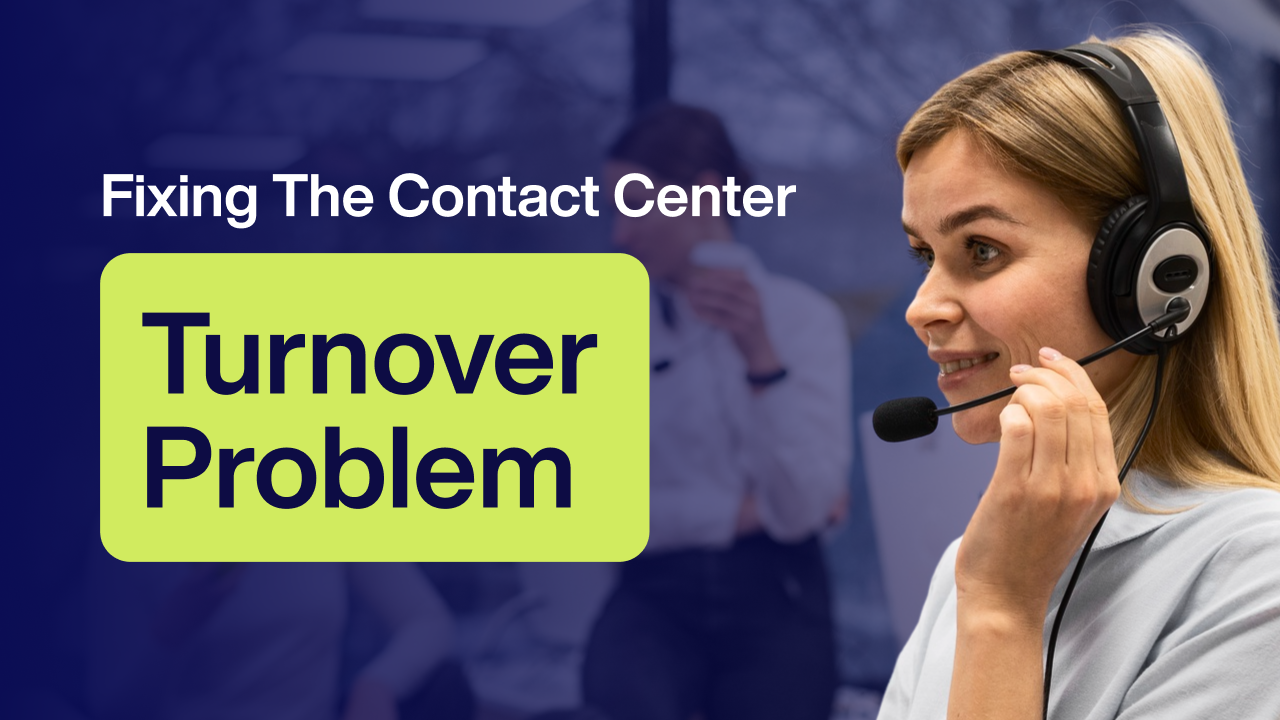Telehealth in FQHCs: Expanding Access While Bridging the Digital Divide

Telehealth has emerged as a game-changer for America’s Federally Qualified Health Centers (FQHCs), especially since the COVID-19 pandemic. These community clinics serve some of the nation’s most underserved populations, and telehealth’s rapid expansion has helped maintain care delivery amid unprecedented challenges. In 2020 alone, FQHCs saw an explosive surge in virtual visits – telehealth visits increased by roughly 6,000% from 2019 to 2020, with over 28 million virtual visits by 2021 111. This dramatic growth (one analysis likened it to a 63-fold increase in Medicare telehealth usage 222) underscores how the pandemic accelerated telehealth adoption.
In this Introduction, we explore how telehealth in FQHCs grew and set the stage for a more connected and equitable healthcare future. We’ll examine key benefits and challenges of this modality, strategies for bridging the digital divide, and future trends – from AI to remote monitoring – that can further enhance telehealth in FQHCs. The goal: to show how telehealth is expanding access to care while addressing the gaps in technology access and literacy that many patients face.
FQHCs are on the front lines of care for low-income, rural, and minority communities. Nearly 98% of FQHCs rapidly adopted telehealth during the pandemic 111 to keep their doors (virtually) open when in-person visits were limited. This swift action helped ensure continuity of care – patients could still see their doctors via video or phone calls, avoiding lapses in treatment for chronic diseases or missing urgent consultations. Telehealth also enabled FQHCs to reach patients at home, which was crucial during lockdowns and for those wary of visiting clinics in person. As a result, what started as an emergency response has evolved into a lasting care model. Telehealth’s rise in FQHCs (with one study noting 30% of health center visits were virtual in late 2020 333) has proven that with the right support, digital care can complement in-person services and enhance healthcare access for millions.
Benefits and Challenges of Telehealth in FQHCs
Telehealth offers clear benefits for FQHC patients and providers alike. First and foremost is broader access: virtual care helps reach patients who might otherwise struggle to visit a clinic due to distance, lack of transportation, or mobility issues. Many FQHCs serve rural areas where specialists are far away – telehealth bridges that gap by bringing care to the patient’s location. This convenience not only saves travel time but also reduces missed appointments. In fact, telehealth has alleviated burdens like traveling long distances for care 444, a huge advantage for those in remote communities or those with disabilities. Patients can connect with their healthcare team from home or a nearby location, which is especially helpful for working parents or caregivers who can’t easily take time off.
Additionally, telehealth supports continuity of care: patients with chronic conditions (like diabetes or hypertension) can have more frequent check-ins via video, helping to manage issues before they worsen. FQHC clinicians also report that virtual visits can be more patient-centric in some cases – for instance, a behavioral health counseling session via phone may feel safer or more comfortable for a patient, leading to more open communication.
Despite these advantages, FQHCs face significant challenges in making telehealth truly equitable. The biggest hurdle is the digital divide – the gap between those who have ready access to technology and the internet and those who do not. Patients at FQHCs are often low-income, older, or from racial/ethnic minority groups, and these populations are less likely to have reliable broadband or devices for video visits 444. Many rely on older smartphones or pay-as-you-go data plans, which may not support high-quality video calls. Internet connectivity is a major barrier: not everyone has broadband at home, particularly in rural regions where infrastructure is lacking. Telehealth is only possible if patients have a stable internet connection or cellular data – something that cannot be taken for granted in underserved areas.
Another challenge is digital literacy. Not all patients (or even providers) feel comfortable with the apps and gadgets needed for telehealth. For example, setting up a patient portal, downloading a telehealth app, or troubleshooting a webcam issue can be daunting for someone not tech-savvy. According to one analysis of safety-net clinics, audio-only phone calls remained higher than video visits throughout the pandemic 444 – a sign that many patients defaulted to telephone appointments due to difficulties with video technology. Low digital literacy and limited English proficiency can lead to unsuccessful telehealth visits, disproportionately affecting older patients and some minority groups 444. Finally, there are workflow and reimbursement challenges. Early in the pandemic, FQHCs had to rapidly train staff, modify appointment workflows, and deal with uncertainty in billing rules for telehealth. While policies have evolved (discussed more later), navigating these changes was initially a hurdle.
In summary, telehealth in FQHCs brings tremendous promise but also exposes gaps in device access, internet connectivity, and user confidence – issues that must be addressed to ensure no patient is left behind in the digital health revolution.
Bridging the Digital Divide: Community Partnerships and Patient Support
Closing the telehealth gap requires innovative solutions and partnerships. FQHCs around the country are spearheading creative programs to bring devices, internet, and training to the patients who need them. One effective approach is partnering with community organizations like public libraries, schools, and local nonprofits. For instance, libraries have become valuable allies in telehealth expansion. In Delaware, a pilot project installed telehealth kiosks in public libraries to provide private spaces with high-speed internet for virtual visits 555. Patients who lacked a quiet room or broadband at home could go to the local library and use a telehealth kiosk – a booth equipped with a camera, screen, and connection – ensuring they wouldn’t miss their appointment due to technical barriers. Alongside the kiosks, the project loaned out hundreds of Wi-Fi hotspots and Chromebooks through libraries, so that even at home, families could borrow the technology needed for a telehealth session 555. This kind of device loaning and hotspot lending model has been replicated elsewhere, effectively turning community hubs into extensions of the health center.
Other FQHCs work with schools and community centers to set up telehealth access points. A school might designate a private room where students (or even parents) can connect with healthcare providers remotely – this is especially helpful in areas without a school nurse or for specialty consults. By meeting patients where they are, whether at a library, school, church, or shelter, such partnerships help provide connectivity and devices to those who lack them at home 666. In fact, experts note that lack of telehealth access should be treated as a social determinant of health – an essential factor to address through community-driven solutions 666. Collaborating with local agencies, senior centers, places of worship, and even internet service providers can multiply the points of access for patients, gradually bridging the connectivity gap.
Equally important is improving digital literacy and comfort with telehealth among patients. Many FQHCs have introduced or expanded roles like digital navigators or telehealth navigators to coach patients through the technology. Who are digital navigators? They are essentially helpers who teach people to use electronic devices and help patients feel comfortable using telehealth 666. For example, the Northwest Regional Telehealth Resource Center (funded by HRSA) created a training program to teach digital navigators how to assist patients with basics like using a smartphone, logging into a video visit, or finding a Wi-Fi connection 666. These navigators often work one-on-one with patients: they might call a day before a telehealth appointment to walk the patient through installing the clinic’s app, or even meet patients at the clinic or community site to show them how to join a video session.
In Massachusetts, a group of FQHCs hired telehealth patient navigators using grant funding, and saw success in engaging patients. At Brockton Neighborhood Health Center, for instance, navigators targeted high-risk Black patients with hypertension as part of a remote monitoring program – they helped patients set up blood pressure cuffs that sync to an app and addressed any tech problems, which led to better blood pressure control 444. The navigators also check for other social needs (food, housing, etc.), recognizing that tech issues often intersect with other challenges 444. Another FQHC noticed that their Spanish-speaking patients were using telehealth far less than English-speakers, so they assigned a navigator to focus on that disparity 444. By providing bilingual support – helping patients navigate platforms in Spanish and ensuring interpreters are available during visits – they aim to close the utilization gap between language groups. Such multilingual support is crucial: many health centers now offer telehealth with on-demand interpreters or have providers who speak the patient’s language to make virtual care more accessible for non-English speakers.
FQHCs are also investing in patient education and training. Simple steps can make a big difference. Some clinics offer “test run” virtual visits or practice calls so that patients can try connecting from home in a low-stakes setting, building confidence before an actual medical appointment. Others send out easy-to-read instruction guides (with pictures and multiple languages) on how to download the telehealth app or how to enable your microphone and camera. During the pandemic, many providers learned to be patient and flexible – if a video fails, they seamlessly switch to a phone call. That flexibility remains important for telehealth equity. Health centers also enlist family members or caregivers to assist. For an elderly patient unfamiliar with Zoom, having a grandchild or adult child help set up the computer can ensure the visit happens. Some FQHCs have gone as far as delivering enabled devices to patients’ homes – for example, lending an iPad or tablet that’s pre-loaded with the telehealth software, so the patient literally just turns it on at appointment time (staff may later retrieve the device).
Connectivity assistance is another area: clinics are helping patients sign up for federal discount programs like the FCC’s Affordable Connectivity Program, which offers low-income households subsidies for internet service. By referring patients to such programs (or even assisting with enrollment paperwork), telehealth navigators help households get online at affordable rates 444. All these efforts contribute to “digital inclusion” – ensuring that poverty or lack of tech know-how don’t prevent patients from benefiting from telehealth.
We’re already seeing success stories that showcase the impact of bridging the digital divide. One rural FQHC in the Midwest set up special “telehealth rooms” at their clinics – private rooms with strong internet and a device – so that patients without home internet could still have video visits with specialists located elsewhere 444. This meant a patient could go to their local clinic and, via a high-quality video link, consult with, say, a cardiologist in the city, saving them a 3-hour drive yet still getting expert care. In another case, a rural FQHC serving diabetic and heart disease patients introduced remote patient monitoring (RPM) along with telehealth. Patients were given user-friendly devices (like glucometers and blood pressure monitors) that automatically sent readings to the clinic. The results were impressive – within six months, the clinic saw a one-third reduction in hospital readmissions for those chronic disease patients 777. One patient success story from that program involved a man in his 60s with hypertension who previously had to be hospitalized twice when his blood pressure spiked. After enrolling in the telehealth RPM program, he learned to measure his BP daily with a provided cuff, and the clinic’s care team monitored his readings remotely. When they spotted a concerning trend, they did a video consultation and adjusted his medications, preventing another ER visit. He also reported feeling more in control of his health, knowing professionals were just a click away. These kinds of anecdotes underscore telehealth’s potential when access barriers are removed – patients stay healthier and avoid costly complications. By bridging the digital divide with community partnerships, training, and innovative programs, FQHCs are making telehealth a tool for health equity and not just convenience.
Future Trends: AI, Remote Monitoring, and Sustaining Telehealth Momentum
As telehealth becomes a staple of FQHC services, what does the future hold? Several exciting trends and technologies are on the horizon that could further expand telehealth’s reach and effectiveness in community health settings.
Artificial Intelligence (AI) in telehealth is poised to play a growing role. While FQHCs may not be early adopters of every Silicon Valley innovation, they stand to benefit greatly from AI advancements that enhance care for underserved patients. One immediate impact area is patient engagement and outreach. AI-powered software can help clinics analyze their patient populations and identify who might be at high risk or overdue for care. For example, algorithms can scan electronic health record data to flag patients with uncontrolled diabetes or missing follow-ups, and then automatically send them targeted reminders or educational messages. By detecting these high-risk patients and nudging them with notifications and tailored health information, AI can help ensure vulnerable patients don’t slip through the cracks 888. This kind of proactive outreach is especially valuable in FQHCs, which manage large panels of patients who may not come in until very sick. AI-driven communication tools (like smart chatbots or texting systems) can also reduce administrative burdens – they can handle routine inquiries, send appointment reminders in multiple languages, and free up front-desk staff time.
Another arena is AI-assisted clinical support. We may soon see AI “co-pilots” in telehealth visits – for instance, an AI could listen to a patient’s symptoms in a telehealth call (with consent) and provide the doctor with decision support or possible diagnostic suggestions in real time. Already, the FDA has approved hundreds of AI medical algorithms, including tools for remote patient monitoring and diagnostics 888. In an FQHC telehealth context, an AI might help interpret a home-based diagnostic test or translate a patient’s description into a structured note, saving the provider time. Language translation is another promising AI use: real-time translation services powered by AI could enable a provider who only speaks English to seamlessly communicate with a patient who speaks Punjabi or Spanish, without waiting for a human interpreter. This could greatly expand multilingual telehealth access. However, it will be important to implement AI thoughtfully, to avoid bias and ensure these tools truly serve the patient’s interest. With proper oversight, AI could help FQHCs do more with limited staff – from automating follow-ups to analyzing community health trends – thereby enhancing care delivery in the telehealth era.
Another trend that is here to stay is Remote Patient Monitoring (RPM) and integration of mobile health apps. FQHCs are increasingly looking at telehealth beyond just a video chat – it’s about creating a continuous care environment. RPM involves giving patients devices (or leveraging their own smartwatches/phones) to collect health data in real time. We’ve already seen FQHCs use RPM for chronic diseases: glucose monitors that send sugar readings daily, blood pressure cuffs that upload results to the clinic, or even pulse oximeters for COPD patients. The future will bring more affordable, user-friendly RPM gadgets that patients can easily use at home. These tools, combined with telehealth visits, mean care teams can track a patient’s condition in between visits and intervene early. Imagine a patient with heart failure; their weight and blood pressure are logged via a connected scale and cuff each morning. If the readings indicate fluid retention, the clinic can proactively reach out via telehealth to adjust medications, preventing a hospital admission. This shift towards preventive, data-driven care could significantly improve outcomes in underserved populations, who often suffer higher rates of chronic illness. Moreover, the data from RPM can feed into AI systems – for example, an AI could analyze trends and predict which patients are at risk of a flare-up, prompting the care team to act.
Mobile apps and smartphone-based care will also shape FQHC telehealth. For many low-income patients, smartphones are the primary (or only) internet device. Recognizing this, health centers are adopting mobile-first telehealth platforms. A well-designed mobile app can let patients schedule appointments, conduct video visits, chat with a health coach, and receive medication reminders all in one place. We anticipate more FQHCs partnering with developers to create or customize apps that cater to their populations – for instance, apps with simple interfaces, large text options for those with limited literacy, and offline capabilities for those with spotty internet. Additionally, SMS (text message) outreach is likely to grow. Texting has proven to be a highly effective way to engage patients – whether it’s sending a prenatal care tip or a link to join a teletherapy group session. The future might see more asynchronous telehealth too: patients could answer a questionnaire or send a photo through an app, and providers respond later, saving a trip to the clinic. This kind of flexibility can particularly help those who work long hours or have childcare duties, aligning healthcare with patients’ schedules.
On the policy and funding front, the telehealth landscape for FQHCs is evolving in a positive direction. During COVID-19, emergency measures allowed FQHCs to be paid for telehealth visits (which previously was very restricted, especially under Medicare). The good news is that many of these flexibilities have been extended. Congress and CMS have authorized telehealth waivers to continue through at least September 30, 2025 for Medicare 999. This means FQHCs can keep serving as distant-site providers for telehealth (including video and eligible audio-only visits) and get reimbursed, without worrying about geographic restrictions or the patient’s location through that date 999. In addition, Medicaid programs in many states have made permanent changes to support telehealth at health centers, given how successful it was. Behavioral health telehealth, in particular, has strong support – Medicare permanently allowed FQHCs to provide mental health services via telehealth (including audio-only counseling) even beyond the pandemic, acknowledging how vital this modality is for behavioral care 101010.
Policymakers are also looking at sustainable funding for telehealth infrastructure. The Health Resources and Services Administration (HRSA) has provided grants (for example, $55 million in 2022 to expand virtual care in health centers 444) and will likely continue investing in telehealth capacity. FQHCs might tap into federal broadband funding as well – the 2021 infrastructure law injected billions into expanding broadband to rural and underserved areas. As those projects roll out, more FQHC patients will gain access to high-speed internet, which is the backbone of effective telehealth. There is also a push for payment parity laws at the state level (requiring private insurers to pay for telehealth at the same rate as in-person visits), which can impact FQHCs since they see patients across payer types. All these policy trends indicate that telehealth is not viewed as a temporary COVID fix, but as a long-term component of the healthcare system. To make it truly sustainable, FQHC leaders are advocating for permanent inclusion of telehealth in reimbursement models and for continued support to cover the costs of platforms, training, and tech support.
Finally, future telehealth in FQHCs will likely blend seamlessly with in-person care to form a hybrid model. We can expect to see FQHCs refining what types of visits are best done via telehealth versus in-clinic. For example, routine check-ins, medication consultations, mental health follow-ups, and nutrition counseling might stay predominantly virtual (improving show rates and convenience), while initial diagnostic work-ups or procedures remain face-to-face. Provider training will also keep evolving – tomorrow’s FQHC providers will train in “webside manner” just as much as bedside manner, ensuring they build rapport and trust even through a screen. Additionally, as telehealth technology improves (think: clearer video quality, devices that capture vital signs during a call, integration with remote diagnostic tools), virtual visits will become more and more like an in-person exam. The hope is that by 2025 and beyond, telehealth isn’t seen as a separate service but rather as an integrated option every time a patient seeks care: the question will simply be, “Which mode (video, phone, in-person) will best meet this patient’s needs today?”
In conclusion, telehealth in FQHCs has already expanded access to care for vulnerable communities and holds promise to further bridge the digital divide with continued innovation and support. By leveraging community partnerships, investing in digital literacy, embracing new technology like AI and RPM, and advocating for supportive policies, FQHCs are charting a course toward a future where quality healthcare is accessible anytime, anywhere. The journey is ongoing, but the momentum is strong – telehealth is here to stay, and with it comes the opportunity to make healthcare more equitable and patient-centered than ever before.
Top 5 Patient Telehealth Tips (Sidebar)
For patients new to telehealth, here are five practical tips to help you have a smooth and successful virtual visit:
- Test Your Tech Ahead of Time
Before your appointment, make sure your device (smartphone, tablet, or computer) is charged and that you have the required app or link. Do a quick test call if possible, to check that your camera and microphone are working. This way, you won’t lose precious minutes of your visit fumbling with technology. - Use a Private, Quiet Space
Find a quiet, well-lit space for your telehealth visit. This could be a bedroom with the door closed or even your parked car if you have privacy there. Eliminating background noise and distractions will help you and your provider hear each other clearly. Good lighting (facing a window or lamp) also allows the clinician to see you well, which is important for things like checking symptoms or mood. - Have Your Information and Questions Ready
Just like an in-person visit, prepare a list of your medications, symptoms, and questions beforehand. Keep your pharmacy details handy in case a prescription is needed. Being organized will help you make the most of the virtual visit time. If you have devices like a thermometer, blood pressure monitor, or blood sugar meter, keep them nearby – your provider may ask for those readings during the call. - Secure a Strong Connection (or Backup Plan)
If possible, connect to a reliable internet source. If your home internet is unstable, you might use a phone’s cellular data or go to a location with Wi-Fi (some patients sit in a clinic or library parking lot to use Wi-Fi from there). Let your provider’s office know your phone number; if the video drops, they can call you to continue the appointment by phone. Having a backup contact method ensures you still get the care if video fails. - Ask for Help and Communicate Your Needs
Don’t hesitate to ask for assistance if you’re uncomfortable with technology. It’s okay to have a family member help set up the visit or sit with you if you want. If you need an interpreter or have trouble hearing/seeing, inform the clinic ahead of time – they can often provide language interpretation or other accommodations in telehealth. During the session, speak up if something is unclear or if you’re having technical issues. Healthcare providers understand that telehealth is new for many and are there to help. By communicating openly, you can ensure your virtual visit is just as effective as an in-person one.
By following these tips, patients can feel more confident and get the most out of telehealth appointments. Telehealth is a tool for your convenience and access – with a bit of preparation, it can be a comfortable and efficient way to manage your health 666.
Key Citations
- HealthViewX:
https://healthviewx.com
Referenced for data on explosive surge in FQHC telehealth visits (6,000% increase, 98% adoption). - CMS.gov:
https://www.cms.gov
Referenced for the 63-fold increase in Medicare telehealth usage. - PMC (National Institutes of Health):
https://pmc.ncbi.nlm.nih.gov
Referenced for the study noting 30% of health center visits were virtual in late 2020. - TechTarget:
https://www.techtarget.com
Referenced multiple times for discussions on telehealth barriers (digital divide, reimbursement, workflow challenges), patient navigator success stories, and HRSA grants. - News.Delaware.gov:
https://news.delaware.gov
Referenced for the pilot project installing telehealth kiosks in public libraries (Delaware example). - TelehealthResourceCenter.org:
https://www.telehealthresourcecenter.org
Referenced multiple times for community-based telehealth access points, digital navigator programs, and general telehealth tips. - TriageLogic:
https://www.triagelogic.com
Referenced for the RPM success story showing a one-third reduction in hospital readmissions. - The Chc (Community Health Center) Alliance:
https://www.thechcalliance.com
Referenced for AI tools improving patient outreach and clinical decision support. - Telehealth.HHS.gov:
https://telehealth.hhs.gov
Referenced for information on extended Medicare telehealth waivers through September 30, 2025.
KFF.org (Kaiser Family Foundation): https://www.kff.org
Referenced for policy changes allowing FQHCs to provide mental health services via telehealth (including audio-only) post-pandemic.
No Spam —
Just Good Stuff.
Join our newsletter for actionable advice, insider knowledge, and strategies that drive real results.
No fluff, just value.
%20(1).png)

.png)



































































.png)
.png)
.png)



.png)
.png)
.png)
.png)
.png)
.png)
.png)
.png)
.png)
.png)
.png)
.png)
.png)
.png)
.png)
.png)









